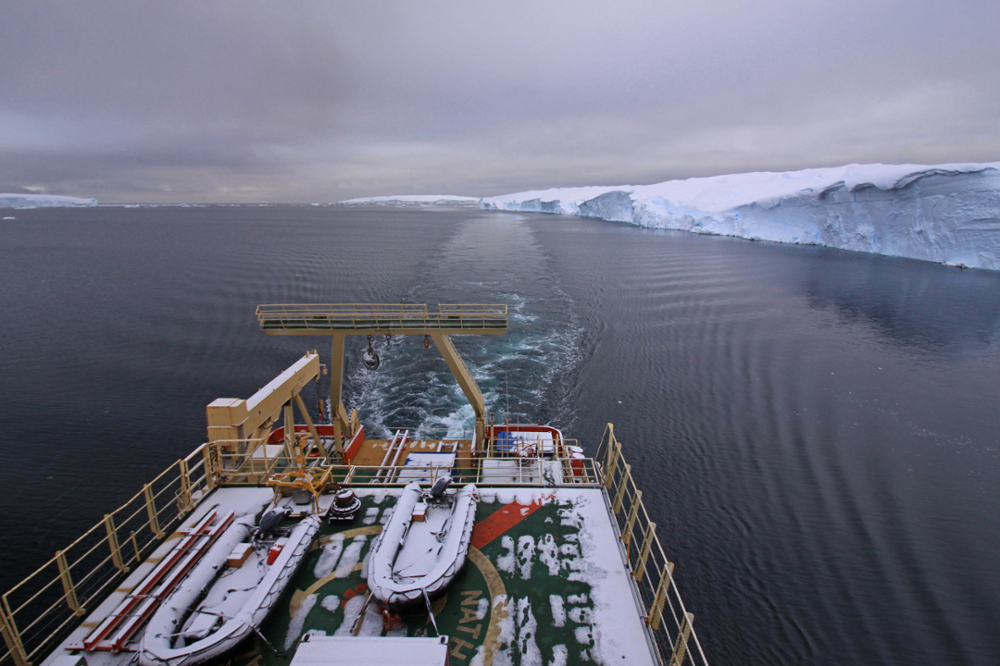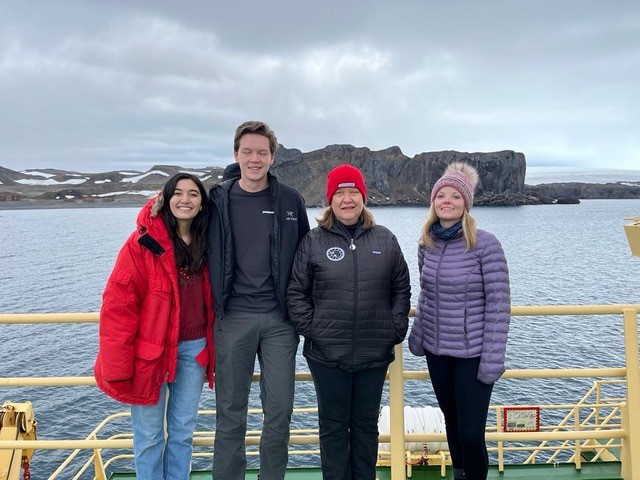Published Study Reports Thwaites and Pine Island Glaciers Share Common History of Thinning
Among the vast expanse of Antarctica lies the Thwaites Glacier, the world’s widest glacier measuring about 80 miles on the western edge of the continent. Despite its size, the massive landform is losing about 50 billion tons of ice more than it is receiving in snowfall within a year, which places it in a precarious position in respect to its stability.

Accelerating ice loss has been observed since the 1970s, but it was unclear when this significant melting initiated – until now. A new study published in the journal PNAS, led by researchers at the University of Houston, suggests that significant thinning and retreat began in the 1940s. Their results on the Thwaites Glacier coincide with previous work that studied retreat of Pine Island Glacier and found its retreat began in the ’40s as well.
“What is especially important about our study is that this change is not random nor specific to one glacier,” said Rachel Clark, lead author, who graduated from UH with a Ph.D. in geology. “It is part of a larger context of a changing climate. You just can’t ignore what’s happening on this glacier.”
Clark and the study authors posit that the glacial retreat was likely kicked off by an extreme El Niño climate pattern that warmed the west Antarctic region. Since then, the authors say, the glacier has not recovered and is currently contributing to 4% of global sea-level rise.
“It is significant that El Niño only lasted a couple of years, but the two glaciers, Thwaites and Pine Island, remain in significant retreat,” said corresponding author Julia Wellner, UH associate professor of geology and U.S. lead investigator of the Thwaites Offshore Research project, or THOR, an international collaboration whose team members are authors of the study.
“Once the system is kicked out of balance, the retreat is ongoing,” she added.
Their findings also make it clear the retreat at the glaciers’ grounding zone, or the area where the glaciers lose contact with the seabed and start to float, was due to external factors.
“The finding that both Thwaites Glacier and Pine Island Glacier share a common history of thinning and retreat corroborates the view that ice loss in the Amundsen Sea sector of the West Antarctic ice sheet is predominantly controlled by external factors, involving changes in ocean and atmosphere circulation, rather than internal glacier dynamics or local changes, such as melting at the glacier bed or snow accumulation on the glacier surface,” said Claus-Dieter Hillenbrand, U.K. lead investigator of THOR and study co-author at British Antarctic Survey.
Dating of Sediment Cores Plays Key Role in Study
Wellner and the THOR team used three primary methods to reach their conclusion. One of those methods was marine sediment core collection that was closer to the Thwaites Glacier than ever before. They retrieved the cores during their trip to the Amundsen Sea near Thwaites in early 2019 aboard the Nathaniel B. Palmer icebreaker and research vessel. The researchers then used the cores to reconstruct the glacier’s history from the early Holocene epoch to the present. The Holocene is the current geological epoch that began after the last ice age, roughly 11,700 years ago.

Computed tomography scans were used to take x-rays of the sediment to gather details from its history. Geochronology, or the science of dating earth materials, was then used to reach the conclusion that significant ice melt began in the ’40s.
Clark used 210Pb (lead-210), an isotope that’s naturally buried in the seafloor sediments and is radioactive, as the most important isotope in her geochronology. This process is similar to radiocarbon dating, which measures the age of organic materials as far back as 60,000 years.
“But lead-210 has a short half-life of about 20 years, whereas something like radiocarbon has a half-life of about 5,000 years,” Clark said. “That short half-life allows us to build a detailed timeline for the past century.”
This methodology is important because although satellite data exists to help scientists understand glacial retreat, these observations only go as far back as a few decades, a time frame that is too short to determine how Thwaites responds to ocean and atmosphere changes. Pre-satellite records are needed for scientists to understand the glacier’s longer-term history, which is why sediment cores are used.
Study Informs Future Modeling to Reduce Uncertainty of Sea-Level Rise
Thwaites Glacier plays a vital role in regulating the West Antarctic ice sheet stability and, thus, global sea-level rise, according to Antarctic researchers.

“The glacier is significant not only because of its contribution to sea-level rise but because it is acting as a cork in the bottle holding back a broader area of ice behind it,” Wellner said. “If Thwaites is destabilized, then there’s potential for all the ice in West Antarctica to become destabilized.”
If Thwaites Glacier were to collapse entirely, global sea levels are predicted to rise by 25 inches.
“Our study helps to better understand what factors are most critical in driving thinning and retreat of glaciers draining the West Antarctic ice sheet into the Amundsen Sea,” Hillenbrand said. “Therefore, our results will improve numerical models that attempt to predict the magnitude and rate of future Antarctic ice sheet melting and its contributions to sea levels.”
Researchers with THOR are part of an even larger initiative, the International Thwaites Glacier Collaboration, a joint U.S.-U.K. partnership to reduce uncertainty in the projection of sea-level rise from Thwaites Glacier.
The study’s authors are Clark, Wellner, Asmara Lehrmann, and Georgina Garcia-Barrera of the University of Houston; Hillenbrand, James Smith, Robert Larter and Kelly Hogan of the British Antarctic Survey; Rebecca Totten and Victoria Fitzgerald of the University of Alabama; Lauren Miller and Allison Lepp of the University of Virginia; Alastair Graham of Cardiff University; Frank Nitsche of Columbia University; James Kirkham of the University of Cambridge and the British Antarctic Survey; Werner Ehrmann of the University of Leipzig; and Lukas Wacker of Ion Beam Physics in Zurich.
- Rebeca Hawley, University Media Relations